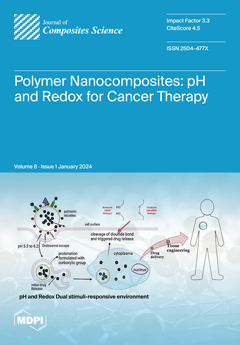Adhesion between orthodontic brackets and conditioned enamel surfaces is essential for treatment success with fixed appliances. During treatment, enamel demineralization lesions commonly appear although remineralization is possible through fluoride application. Aim: Evaluation of the surface rugosity in bracket rebonding, specifically the influence of
[...] Read more.
Adhesion between orthodontic brackets and conditioned enamel surfaces is essential for treatment success with fixed appliances. During treatment, enamel demineralization lesions commonly appear although remineralization is possible through fluoride application. Aim: Evaluation of the surface rugosity in bracket rebonding, specifically the influence of fluoride application before the bonding protocol. In total, 30 human premolars extracted for orthodontic reasons were used and divided into three groups. The control group was not submitted to any experimental manipulation; group 1 and 2 were placed in a demineralization solution and group 2 was additionally subjected to a subsequent fluoride application. The surface rugosity was measured at different timings: T0—before bracket bonding; T1—first bracket debonding after composite removal; and T2—second bracket debonding after composite removal. For the statistical analysis, the Kruskal–Wallis test, Mann-Whitney test, and Student’s
t-test were used. Regarding the comparison between groups, at T0 and T1, no statistically significant differences were observed. However, at T2, statistically significant differences were verified between the control group and group 1 for the parameters: Ra (
p = 0.0043), Rq (
p = 0.0043), Rqmax (
p = 0.0043), Rp (
p = 0.0087), and Rv (
p = 0.026). Regarding the evaluation between time points, in the control group, no statistically significant differences were observed. In group 1, statistically significant results were found between T0 and T1 for the parameters: Rq (
p = 0.0451), Rqmax (
p = 0.0451), Rp (
p = 0.0091), and Rvk (
p = 0.0433) and between T1 and T2 for the parameters: Ra (
p = 0.0465), Rq (
p = 0.0433), Rqmax (
p = 0.0433), and Rp (
p = 0.0155). In group 2, statistically significant differences were found between T0 and T1 for the parameter Rvk (
p = 0.0405). A decrease In surface rugosity was observed during multiple bracket rebonding procedures. Therefore, this study suggests that rebonding procedures alter the enamel surface rugosity. The need for rebonding should be avoided, opting for a more effective and correct first bonding. In the case of multiple rebonding, enamel remineralization maneuvers must be applied to recover the surface, since the results of this study suggest that the application of fluoride prior to bracket adhesion promotes lower surface roughness.
Full article





